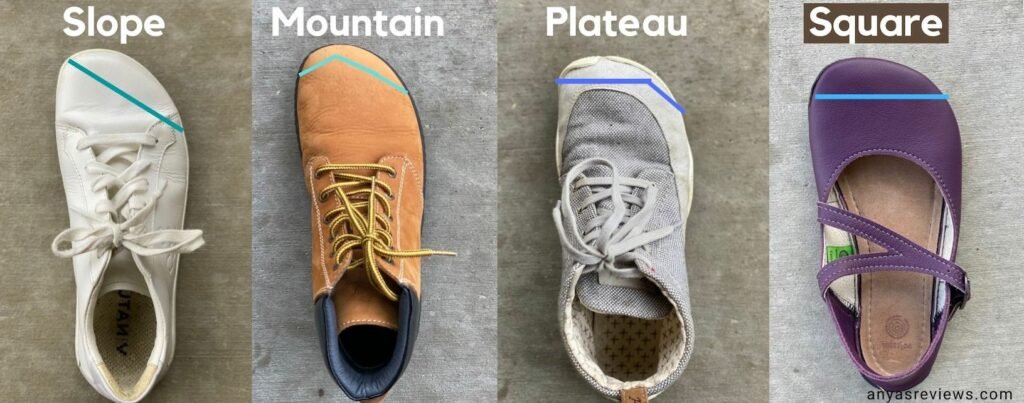
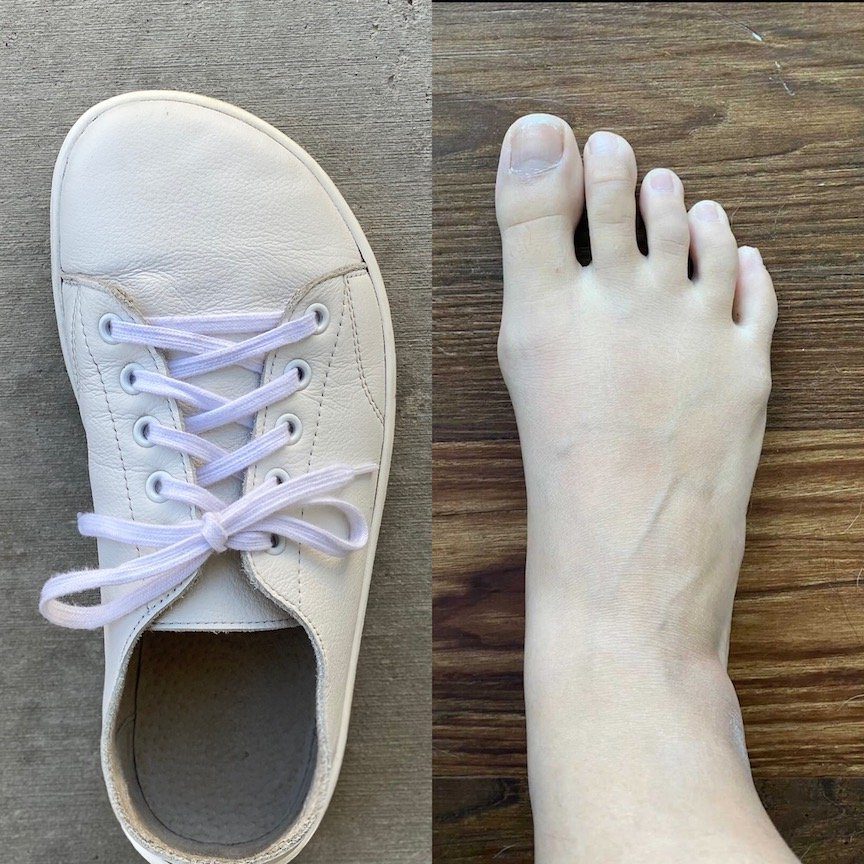
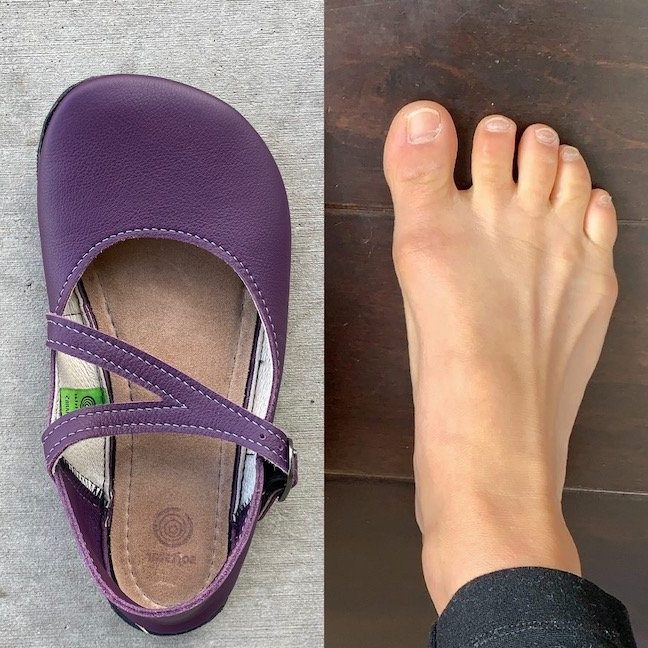
When you switch to healthy footwear, you’re deciding your feet are important. And that means no longer wearing shoes that don’t fit. But with so many variations in foot shape and size, it can be really hard to find a shoe that actually fits YOUR foot. In this post we’re discussing how to measure your feet, the basic foot types, and the barefoot shoes and brands that work well for your foot type.
Keep in mind that this is a general guide. There are tons of other barefoot shoe brands that fall somewhere in the middle and aren’t listed out here. To find barefoot shoes by category and lots more brands make sure you check out my other shoe lists, and the Barefoot Shoe Finder. But no matter what type of shoe you are looking for, getting to know your feet first will make shopping that much easier!
I have first hand experience with nearly every single brand on this list. Be sure to check out the barefoot shoe reviews section and make use of the search bar if you have any questions about a particular brand!
*If you have more specialized questions about whether barefoot shoes are right for you, please check out the Barefoot Shoes FAQ!*
Measuring Your Feet
First things first. Having a handle on your foot measurements is pretty important, BUT it is not foolproof. After helping many customers measure and use a size chart via Anya’s Shop we’ve learned that fit is highly personal and this advice should be taken with a grain of salt. You will need to get to know how YOU want your shoes to fit first and foremost. So take this measuring and size chart advice with a grain of salt. With that in mind, here are some measuring best practices.
Foot Measuring Best Practices
- I always measure my feet in centimeters to ensure an accurate number, and I measure before each purchase (in case my feet have changed).
- If you plan to wear socks you should have them on.
- Measure at the end of the day when your feet are biggest.
- If you are new to barefoot shoes, keep in mind that they may feel too big the first time you put them on. If they stay securely on your foot when you walk and don’t slosh around, that space around your toes is good and you probably picked the correct size!
- The general recommendation is to wear shoes that are 1 – 1.2cm longer than your foot, but it can vary significantly depending on your preference and the style of shoe. In slip on shoes I sometimes have only .5cm extra length so that they fit close and securely on my foot. In lace up boots that are highly adjustable, I am comfortable with as much as 2cm extra length. If the shoe matches your foot shape perfectly, less extra length is required (they’re foot gloves!). And all of this can be impacted by the design of the upper, the materials used, and your particular foot type and preferences.
Despite the inevitable variations, getting an accurate measurement and understanding a size chart can reduce the chance of sizing mistakes. There are two main ways to measure: A foot tracing and the wall method. For expensive/risky shoe purchases I always measure both ways TWICE in the evening. It’s ok if your measurements are slightly different every time, just use the average.
Foot Tracing
A foot tracing is the most common way to measure. You simply trace an outline of your foot and measure. But it’s important to know that it adds about .5 cm to your actual foot size.
So if you use a foot tracing to figure out what size shoe you need, take your measurement and add only .5 – 1cm (so the total shoe length you are looking for would then be 1 – 1.2cm longer than your actual foot size), and find the nearest corresponding size on the size chart. My feet measure 23.2 from a foot tracing, so I look for shoes with an internal length of 23.7-24.2.
Some people get confused about their foot width when they use a tracing, because they aren’t taking into account the extra mm the tracing added. My foot measures 9.2cm wide from a tracing but I can comfortably wear shoes that have an internal measurement of 8.8cm (without socks). This is because my actual foot width is .5cm less than the 9.2 I get from a tracing.
Watch the vid below for how to do a foot tracing. Make sure you keep your pencil straight up and down!
Wall Method
The wall method yields the most accurate length and width of your foot. You measure foot length by placing your heel lightly against the wall (don’t push it in) and putting a heavy book where your longest toe ends. Then mark where the book is and measure that distance. You get your foot width by lining up the outside edge of your foot against the wall and placing the book on the other side. Then mark with a pencil and measure.
If you are ordering custom barefoot shoes, you might have additional measurements to take! Follow each brand’s instructions carefully and don’t be afraid to measure multiple times!
Understanding A Size Chart
To understand a size chart you need to read the instructions listed on the brands’ web page, because different brands create their size charts differently. It might show the length/width of the insole, the dimensions of the “last” used to mold the shoe, or the length of the foot that fits in each size.
If there are no instructions for how to use the size chart, contact the brand for clarification. But in my experience, when it’s not stated, the size chart shows the internal dimensions of the shoe and not the foot that fits inside. In that case, you would use the above instructions to find your foot length and add 1cm to find your size.
Understanding Foot Type
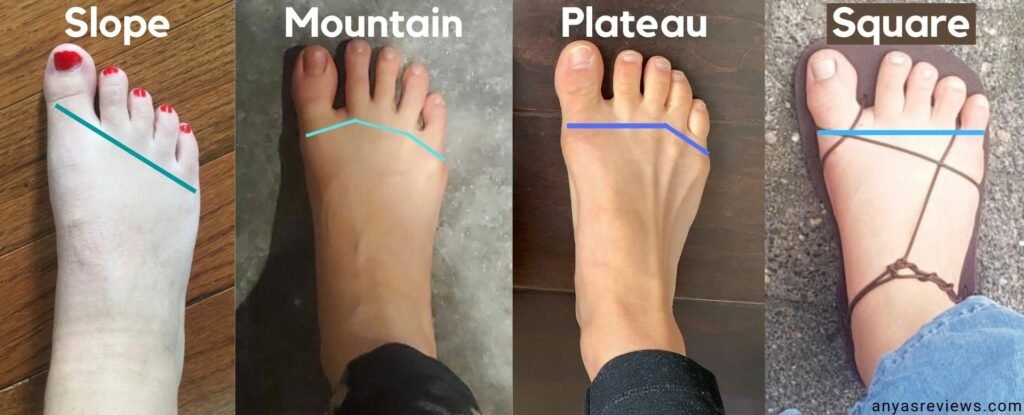
There are a dizzying amount of foot types and most people fall somewhere on a spectrum (metaphor for life). So let’s illustrate the main ones.
- Slope feet have a prominent big toe and all toes are shorter than the previous one.
- Mountain feet have their 2nd toe longest.
- Plateau feet have the first 3 toes all the same length and then it tapers (or for some it might be 2 or 4 that are the same length).
- Square feet are straight across.
Identifying the shape of your foot can make it a lot easier to select a shoe!

You can see above that barefoot shoe brands all have a different shape to them, while having in common that they are wide at the toe box where we need to the most space. So let’s discuss brands that work well for each foot type.
Barefoot Shoe Brands for Slope Feet
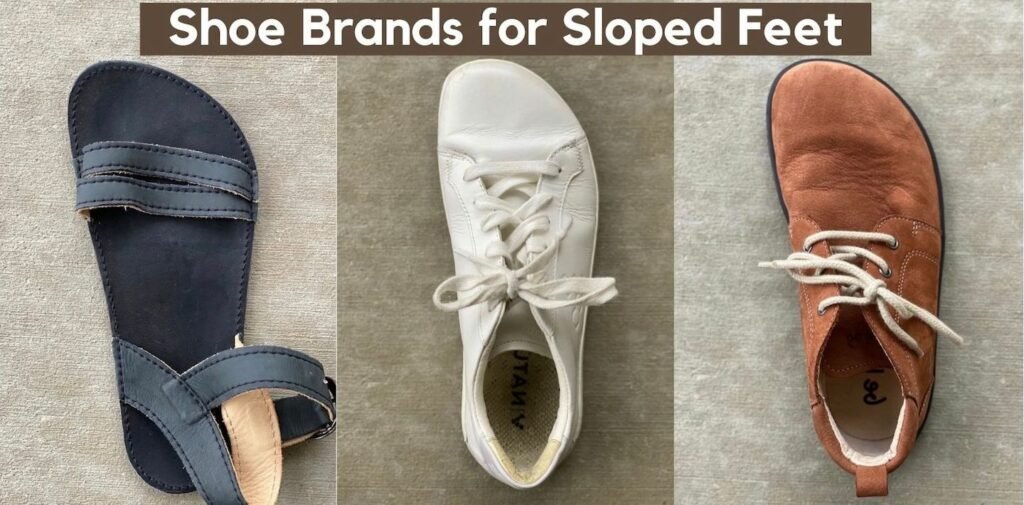
Not many brands cater to Slope only feet, but the good news is they don’t need to. When all your toes are shorter than your big toe you’re not likely to have issues with them running into the front of the shoe. So people with Slope feet can often fit into every shoe shape (provided they work for your width and volume – keep reading for more info). Here are a few barefoot shoe brands that follow an Slope foot shape.
- Be Lenka – Be Lenka is also a very wide brand, so they will fit a wider range of people than narrower Slope shaped shoes. Use code ANYASREVIEWS 5% off directly from Be Lenka (returns are only accepted from within the EU and USA). They are also available at Anya’s Shop in the USA with worldwide shipping available.
- Vivobarefoot – ARVIVO20 for 20% off
- Groundz – Code ANYASREVIEWS gets you 10% off
- Aylla
Barefoot Shoe Brands for Mountain Feet
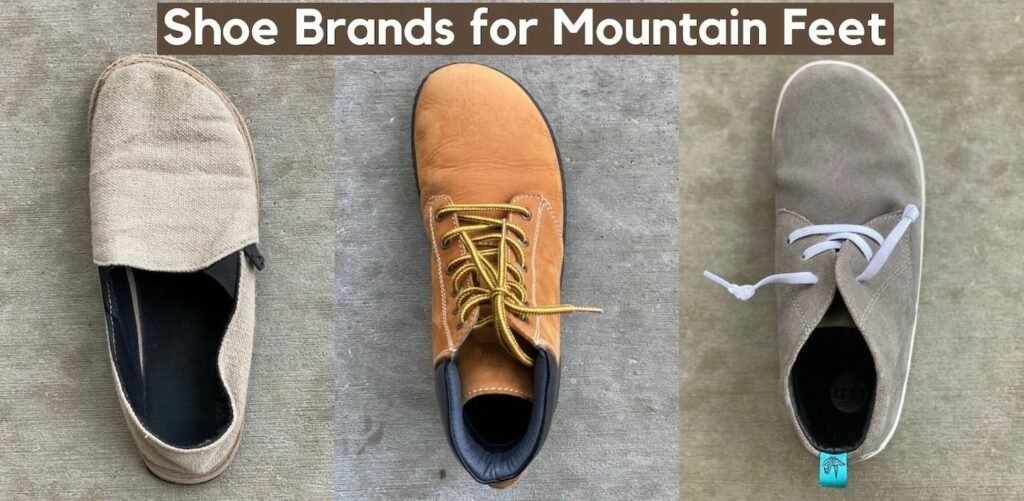
People with Mountain feet have to be careful about shoes that slope after the big toe. The following brands have a more rounded toe box shape, but also check out the brands for Plateau & Square feet, as many of them will work too.
- Crupon Barefoot Sandals – Code
ANYAfor 10% off. Read my Crupon Review here - Feelgrounds – Use code ANYA5 for 5% off your first order. Read all my Feelgrounds Reviews here
- Groundies – Read all my Groundies Reviews here. Select styles available at Anya’s Shop
- Lisbeth Joe – Use ANYASREVIEWS for 5% off. Read my Lisbeth Joe reviews here
- Mukishoes – Use
ANYAMUKIfor 10% off. Read all my Mukishoes reviews here - PaperKrane – Also available at Anya’s Shop!
- Posh Panda – Read my Posh Panda reviews here
- Splay Shoes – Use code ANYASREVIEWS for 10% off. Read my Splay reviews here
- Unshoes – ANYA for 10% off. Read my Unshoes reviews here
- Xero Shoes – Read all my Xero Shoes reviews here
- Xero Shoes EU
Barefoot Shoe Brands for Plateau & Square Feet
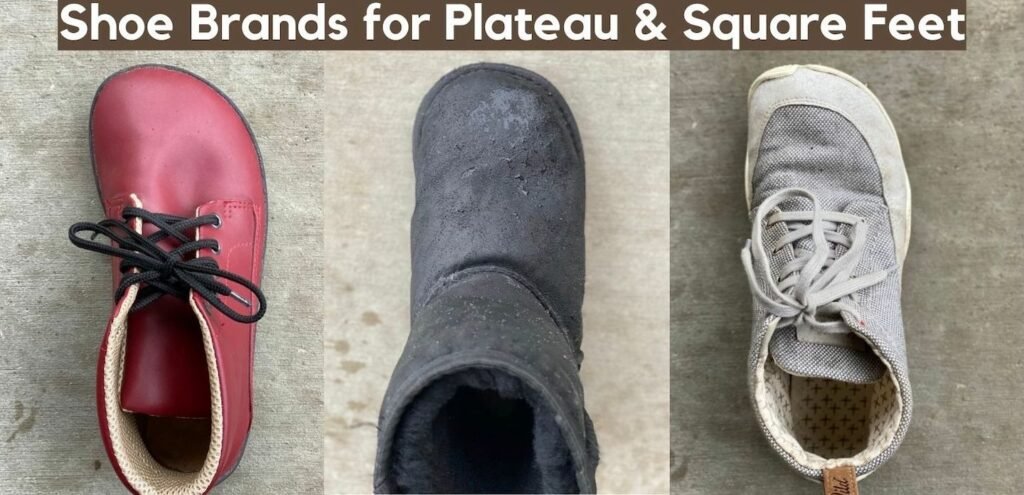
Plateau and Square feet also need to watch for sloping toe boxes. That doesn’t mean you can never try other options, but you might need to size up for enough space for your outside toes. People with this foot type may want to focus on brands that also have an extra wide fit.
Below are some of the brands that cater to feet that are more square.
- Ahinsa – Use code ANYASREVIEWS for 10% off. You can now order the black Ahinsa Jaya through Anya’s Shop! Orders placed through our shop will be eligible for US returns.
- Bohempia – ANYASREVIEWS gets you 10% off. Select styles available at Anya’s Shop. Read my Bohempia review here
- Freet – AnyaFreet gets you 10% off. Read my Freet review here
- Lems – These are a thicker than most barefoot brands, and not all models are zero drop and foot shaped – but they’re clearly labeled in the product descriptions. European residents can find Lems at Mugavik Barefoot and use code ANYASREVIEWS for 5% off
- Origo Shoes – Code ANYA for 10% off. Ships to the USA & Canada only
- Softstar Shoes Primal Line – Read my Softstar reviews here
- Tadeevo – ANYASREVIEWS for 5% off. Read my Tadeevo reviews here
- Unshoes – ANYA for 10% off. Read my Unshoes reviews here
- Wildling – Read all my Wildling reviews here. Use code AWN_ANYA_S for a one-time free shipping offer. If you are outside the US/Canada, use this Wildling Shoes link.
- Vivobarefoot Made in Ethiopia – This line is shaped differently than other Vivo shoes. Read my Addis review here. And ARVIVO20 for 20% off
- Zeazoo Dingo – get 5% off Zeazoo direct with code ANYASREVIEWS, or get them from Anya’s Shop if you’re in the US (Save on shipping)
What is Foot Volume?

On to the next foot feature! Foot volume describes how much vertical space your foot takes up. This can be at any point along the foot, including at the arch or instep, the ball of the foot, or the toes. And it is independent of your length, width, and foot type.
- High volume feet are “tall” or “deep” and take up space in the top of the shoe. If you have this type of foot you may find that shoes feel extra snug over the arch of your foot and you have to keep your laces loose.
- Low volume feet are shallow, or in other words they don’t come very high up from the ground and don’t take up much vertical space. People with this type of foot may find that there is extra space in the top of their shoes. This can result in a lot of sloshing around and toe gripping, but don’t worry it’s an easy fix.
In my experience, foot volume has a very high impact on whether your shoes will fit. Recognizing what kind of foot volume you have can really help you make better shoe purchases.
Barefoot Shoes Brands for Low Volume Feet

There aren’t many barefoot shoe brands that cater specifically to low volume feet, BUT that shouldn’t prevent you from trying them all. It is very easy to fix a low volume problem either with barefoot insoles or my favorite felt inserts.
You can learn more ways to make shoes fit your feet better in this Fit Hacks for Low Volume Feet FAQ. But if you don’t want to have to make adjustments, these are brands that work best for lower volume feet.
- Vivobarefoot –ARVIVO20 for 20% off
- Splay Shoes – Use code ANYASREVIEWS for 10% off. Read my Splay reviews here!
- Be Lenka Wool Lined Boots, Champ & Eazy Sneakers – All available at Anya’s Shop!
- Groundies Sneakers on the GO1 sole (the GS1 sole models fit high volume by contrast) Select styles available at Anya’s Shop
- Bedrock Sandals
- Earth Runners – ANYA for 10% off
- Shamma Sandals
Barefoot Shoe Brands for High Volume Feet

If you have high volume feet it’s unlikely you’ll be able to make a low volume shoe fit. Your best bet is to choose a high volume shoe to begin with and get good at stretching techniques (Here you can see some more High Volume Fit Hacks). Below are a few high volume barefoot brands and shoes.
- Altra Running – Read my Altra review here
- Be Lenka Prime & Icon – The Prime can also be found at Anya’s Shop
- Bohempia – Get 10% off with code ANYASREVIEWS. Select styles available at Anya’s Shop
- FeelBarefoot – Code ANYA50 for a discount. Read my FeelBarefoot review here
- Feelgrounds Droptops (Especially in knit) – Use code ANYA5 for 5% off your first order
- Lems – These are a thicker than most barefoot brands, and not all models are zero drop and foot shaped – but they’re clearly labeled in the product descriptions. European residents can find Lems at Mugavik Barefoot and use code ANYASREVIEWS for 5% off
- Groundies Universe – Select Groundies styles available at Anya’s Shop
- Groundz – ANYASREVIEWS for 10% off
- Lisbeth Joe – ANYASREVIEWS for 5% off
- PaperKrane – Also available at Anya’s Shop
- Raum Goods
- Shapen – Wide width model. Use codeANYA5 for 5% off. You can also find Shapen Barefoot at Anya’s Shop!
- Tadeevo – ANYASREVIEWS for 5% off
- Unshoes – ANYA for 10% off
- Vivobarefoot Made in Ethiopia – ARVIVO20 for 20% off
- Xero Shoes
- Xero Shoes EU
- Zeazoo Dingo – get 5% off Zeazoo direct with code ANYASREVIEWS, or get them from Anya’s Shop if you’re in the US (Save on shipping)
- Bedrock Sandals
- Earth Runners – ANYA for 10% off
- Shamma Sandals
And if you are someone with a Medium Volume Foot, you are in luck. Because nearly everything else should work for your volume. And you can also make many high volume shoes work with the laces cinched a bit, and low volume shoes with the insoles removed.
Narrow Vs Wide
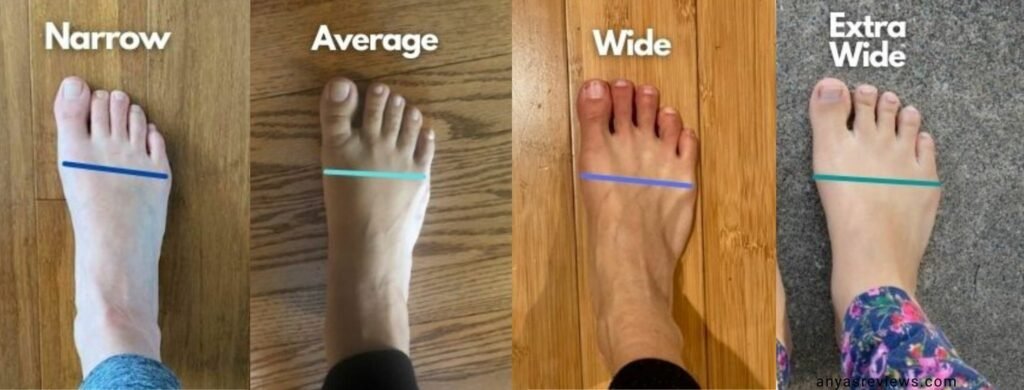
In the barefoot shoe world width usually refers to toebox width, not width the entire length of the shoe. Some people might have narrow heels but wide toes, while others are wide the entire length of the foot.

You can see that some of the above brands have narrow heels, and others tend to be wider through the shoe. For the purposes of this post, we will keep it focused on toe box width, but the better you know your feet the easier it will be to find the right shoe.
If you want to dig deeper into this, check out my post on the shoes best for extra wide feet!!
How Do I Know My Foot Width?
Narrow and wide are subjective terms, but most barefoot shoe brands fall into what we’ll call “average” width. Of course they are not average compared to conventional shoes, but conventional shoes are often too narrow for standard feet, so for our purposes “average” is appropriate.
So if you find that your feet are sloshing around in all your shoes (including barefoot shoes) then you may have narrow feet. If your foot is always rolling off the edges of the soles of your barefoot shoes, then you might have wide feet. If you have no idea, I recommend trying one of the average width brands listed below (maybe one with free shipping/returns to be safe!) and going from there – because if you’ve only worn conventional shoes thus far you likely have a distorted view of your foot width.
Now let’s list the best options in different toe box widths.
Barefoot Shoe Brands for Narrow Feet
- Vivobarefoot – While they fit most medium width people, Vivobarefoot also works for narrow feet because they have a close fit.
- PaperKrane – Also available at Anya’s Shop
- Crupon Sandals – Use code ANYA for 10% off
- The Storehouse Flats – ANYA for $5 off
- Xero Shoes
- Xero Shoes EU
- Shapen Ballet Flats – Use codeANYA5 for 5% off
- Bedrock Sandals
- Ahinsa – Select ballet flats for narrow feet. Use code ANYASREVIEWS for 10% off
- Zapato Feroz – select styles available at Anya’s Shop
- Zeazoo Sandals – Use code ANYASREVIEWS for 5% off. Select styles available at Anya’s Shop
- Free Form Shoes – Men’s dress shoes
Barefoot Shoe Brands for Extra Wide Feet

All barefoot shoe brands should be wide compared to conventional shoes. But this is a list of extra wide options, for people who don’t fit into other barefoot shoe brands, starting with the widest. Keep in mind that custom may be a good option if you have trouble finding shoes that fit (see the next section).
And here is an article that goes into more detail on these shoes and separates them out into Fan Shaped and Straight – Where Do You Need Your Width?
- Softstar Shoes Primal Line – The absolute widest there is! I have written two Primal Softstar reviews.
- Bohempia Wide Width – Get 10% off with code ANYASREVIEWS.Select styles available at Anya’s Shop
- Be Lenka – International customers can get 5% off with code ANYASREVIEWS. You can order Be Lenka shoes from Anya’s Shop!
- Groundies – Models labeled Barefoot+ are extra wide!
- Groundz – ANYASREVIEWS for 10% off
- Ahinsa – Everything here is vegan! Use code ANYASREVIEWS for 10% off. You can now order the black Ahinsa Jaya through Anya’s Shop! Orders placed through our shop will be eligible for US returns.
- Vivobarefoot Made in Ethiopia – ARVIVO20 for 20% off
- FeelBarefoot – Code ANYA50 for a discount. Read my FeelBarefoot review here
- Feelgrounds – Code ANYA5 for 5% off your first order
- Freet – AnyaFreet gets you 10% off
- Lems – Choose the Primal 2 for the widest toe box and thinnest sole! Lems Shoes are thicker than most barefoot brands, and not all models are zero drop and foot shaped – read the product descriptions. European residents can find Lems at Mugavik Barefoot and use code ANYASREVIEWS for 5% off
- Magical Shoes – ANYA 10% off
- Realfoot – Super wide toe box, read this review for more information. Code ANYASREVIEWS10 gets you 10% off
- Tadeevo – Use code ANYASREVIEWS for 5% off
- Zlatush
- Joe Nimble (International)
- Unshoes – ANYA gets you 10% off
- Lang S by Tikki Shoes – Available for US/Canadians at Anya’s Shop
- Shapen Barefoot – Ivy, Fleur, and other models in Wide width are extra wide. Use codeANYA5 for 5% off. US/Canadian customers can find the Ivy and Poppy at Anya’s Shop!
Major Barefoot Shoe Brands for Average Width Feet
If you don’t even know where to begin, the brands listed here are a good place to start. They have an anatomical shape and tend to fit an average width foot well. If you find they are too wide or narrow, that can help you determine where to go next.
- Groundies
- Mukishoes – ANYAMUKI gets you 10% off
- Softstar Shoes – Non Primal models.
- Shapen Barefoot – Poppy model. Use codeANYA5 for 5% off. You can also shop Shapen Barefoot at Anya’s Shop!
- Vivobarefoot – ARVIVO20 for 20% off gets you 10% off
- Wildling – Use code AWN_ANYA_S for a one-time free shipping offer. If you are outside the US/Canada, use this Wildling Shoes link.
- Zaqq Barefoot – Some models are tapered. You can find select Zaqq boots at Anya’s Shop!
38 Barefoot Shoe Brands from Narrow To Wide
In the photo below I ordered 38 different barefoot shoe brands that carry everyday barefoot sneakers and lifestyle shoes from narrowest to widest. This is looking specifically at width across the ball of the foot – you can see that there are variations in overall shape between them which may make some shoes feel narrow on your foot, even if they measure wide at the ball of the foot (that’s why the above information on foot shape is useful!). Also, keep in mind that some brands have different width options available, and variations between models. This is my best attempt at generalizing the information to help orient you!
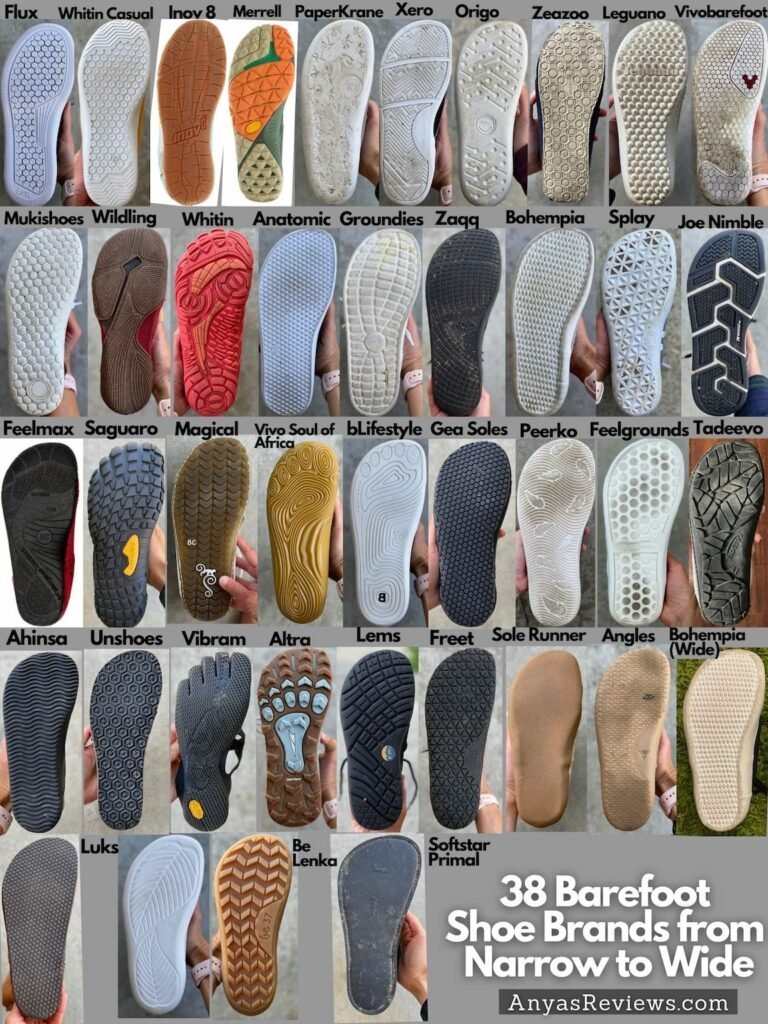
A couple notes: Some of these brands that show up as a narrower option sometimes work for even extra wide feet. Most notably, Wildling Shoes and Mukishoes. Both of these barefoot shoe brands have extra flexible soles that flatten out and tend to accommodate a variety of shapes. Wildling also often has wide-fitting options even with the same sole shape (more material up top). While it’s true that the actual sole width on those two brands are in the correct order in this photo, you may find that they still fit wide. Ultimately we’ll all experience shoes differently, so take everything here with a grain of salt.
Custom Barefoot Shoe Brands
While custom shoes can be a scary investment, if you have tricky feet it can make all the difference. My custom shoes are some of my all time favorites because they fit like a glove. Check out this list of shoemakers that will customize your purchase to your personal foot measurements. For more info on the ones that I have worked with, read this article on Custom Barefoot Shoe Brands.

- Gaucho Ninja Leather – My review of two Gaucho Ninja boots here. Use code ANYASREVIEWS for 10% off
- The Drifter Leather – My ordering guide here
- Zlatush
- Zkama shoes
- Conker Shoes
- Jenon Leather – Shipping to EU & USA only. Use code JENON10 for 10% off. Read my Jenon Leather Review here
- Green Shoes
Sandals
- Chala – Use code 93D5B5E9 for 5% off, and read my Chala Sandals review here
- Conker Shoes
- Deliberate Life Designs – ANYASREVIEWS
- The Drifter Leather
- Jenon Leather – Shipping to EU & USA only. Use code JENON10 for 10% off . Read my Jenon Leather Review here
- Laboo Leather – LOVE these. Also available at Anya’s Shop!
- Nallu
- Paisley Running Sandals
- Running Pads
- Tarasoles
- Zlatush
- Zkama
Looking for more categories of shoes? Here are a few more lists
Still have barefoot shoe questions? Check out the Ultimate Barefoot Shoes FAQ

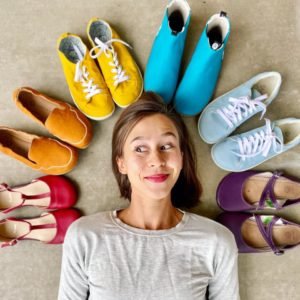

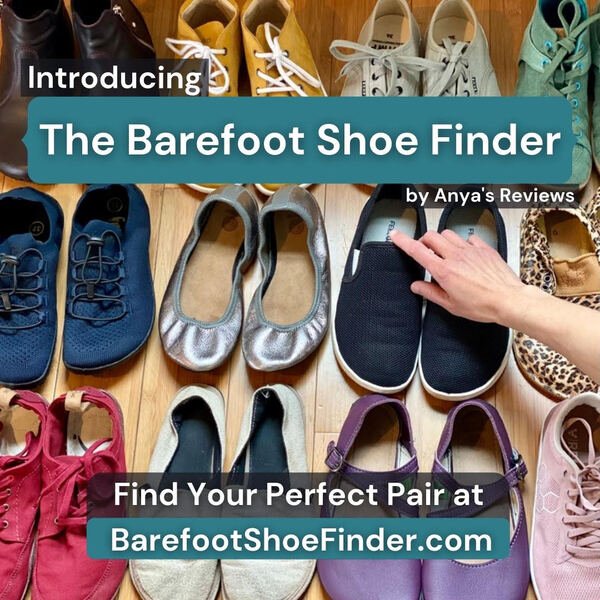
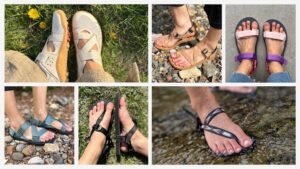
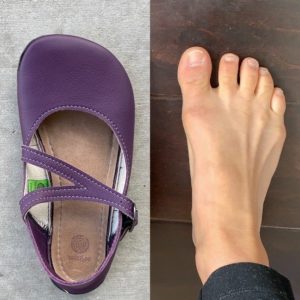


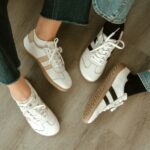




211 thoughts on “The Best Barefoot Shoes & Brands for Your Foot Type”
Oh my gosh, thank you a million times over for this amazing resource! I wish I had found you years ago! I have super wide caveman feet (high volume too!) and I have struggled for so long to find a shoe I can wear comfortably for my everyday activities. I recently found an amazing barefoot sneaker type shoe on Amazon and I can’t believe how much better my whole body feels, even after hours of standing in the gym coaching CrossFit or a day of doing farm work. I was feeling panicky at the thought of going back to horrible boots for the winter and I have found you just in time. I can’t wait to dive into all your resources here. Thank you so much!!!!!
Laura,
Could you share the name of the Wide shoe that you found on Amazon?
It might be Whitin. I’ve heard a lot about them and recently purchased a pair. Anya does have a review of them. They are almost a transitional shoe. They have some cushion in them, are for a medium rise and come in whole and half sizes depending where you are. I had to add heel grips to mine as I have a low rise but they fit great now. Hobibear are similar from what I’ve read.
As a performance coach and a strong proponent of foot function, I am so grateful for this particular blog and for sharing your story about getting better foot mobility. I share this particular blog with anyone I am in contact with who is looking into getting themselves some barefoot shoes.
Hi Anya, I just discovered your blog and am loving the information. Would you be able to tell me the shoe brand to the far right (gray, Chukka boot-looking shoe) under “Mountain Feet”? I’m thinking Paper Crane because of the tag but it’s not on their website right now.
Indeed those are from PaperKrane, but it’s not a current style.
Is there a recommendation for feet with severe bunions? I dont have much pain but my feet are not very functional as they are.
As a result of bunions, my feet are extremely wide by the big toe joint and narrow at the toes. Narrow heals. I need to wear toe spacers to prevent crossover pain making them wider.
An aspect of one’s foot type I’d like to see you address more is foot curvature. My narrow-heeled feet are flat and straight so my big toe lands towards the center of most shoes and my fifth toe is pushed against the outer edge of the shoe. Unfortunately, most shoes are designed for a curved rather than straight feet.
Showing the shape of shoes’ soles is very helpful, thank you!